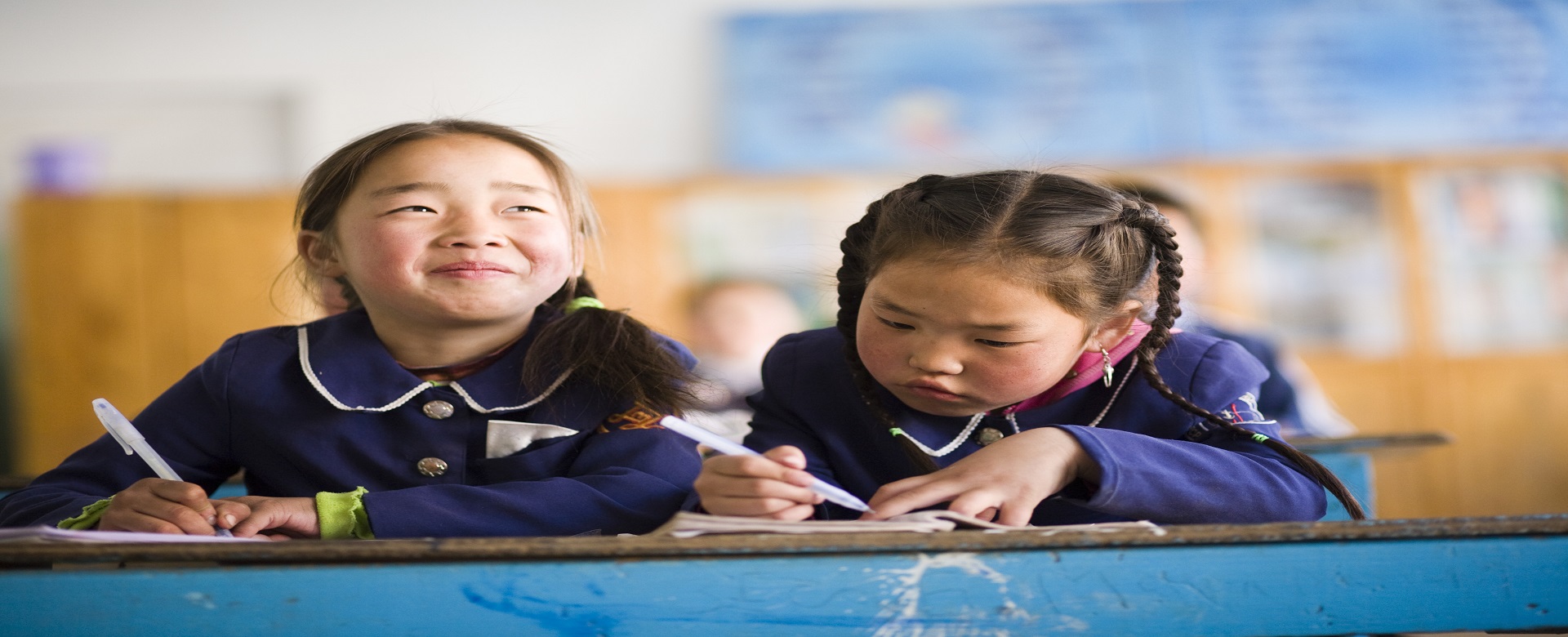
Education in Mongolia
Prior to the Mongolian People’s Revolution in 1921, 99% of the country’s population was unable to read or write and only men were permitted to study. However, the Revolution strongly influenced cultural development in Mongolia which, in turn, led to a complete transformation of the educational system.
Today, with half of the population of Mongolia being young people under the age of 35, education has steadily evolved with the government now actively supporting the development of the country’s students and youth.
Children from the age of two attend one of the 1416 kindergartens throughout Mongolia, the first having been established in 1930, before moving on to pre-school classes until they reach the age of eight. They then begin ten years of schooling, eight of which are compulsory, through the Primary, Middle and Senior stages of the education system which is taught at the 74 primary schools, 116 secondary schools and 608 high schools throughout Mongolia.
Whilst attending primary school for four years, children develop a basic understanding of the Mongolian language which, in written form, uses the Russian Cyrillic alphabet, the establishment having moved away from the classical Mongolian Uigur script in 1941

The next four years are then spent at high school studying the Middle stage of education which follows a general curriculum covering the main academic subjects as well as encouraging the development of citizenship skills. Following completion of this stage, compulsory education has been achieved.
Those students who wish to continue their education then have a choice of how to proceed with their studies over the following two to three years. They may choose to attend a secondary school to further their general schooling with a view to attending university or they may select a vocational institution which will equip them with the qualifications necessary to follow a trade or profession.
Those moving on to further education study at one of Mongolian’s universities of which 18 are state owned, 75 are state/privately owned and 3 are owned by foreign institutions. The best known of these is the National University of Mongolia which was the first to be established in 1942 with the first private university opening in 1991. Since the mid-1990s, the cost of tertiary education has had to be met by the student with tuition fees currently costing between 1.7 million and 4.5 million MNT.
Although since 1951 all provinces have had a secondary school in their center, children from rural areas were still without any structured education until the introduction of non-formal distance education by the Ministry of Education, Culture and Science. This schooling program is operated in collaboration with training centers with lessons provided by television or video. The lessons cover a variety of topics including health, diet and hygiene as well as more vocational subjects such as wool processing, marketing and book-keeping.
Education has, therefore, greatly developed from the days when only the male population was permitted to study and very few of Mongolia’s citizens were able to read or write.













